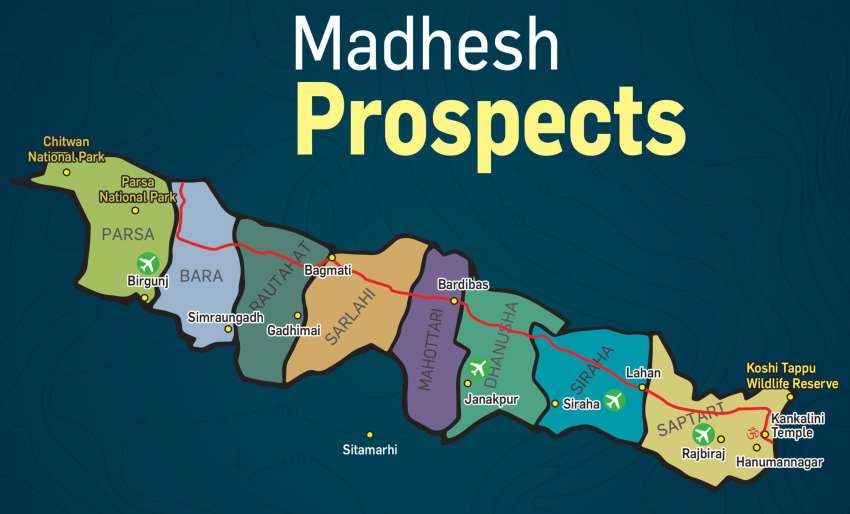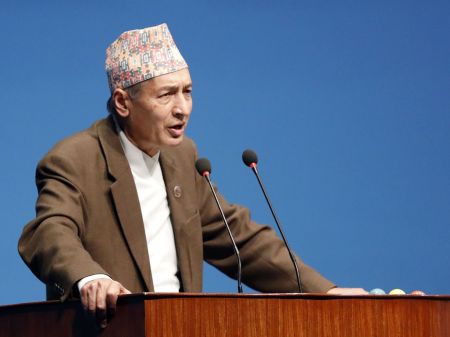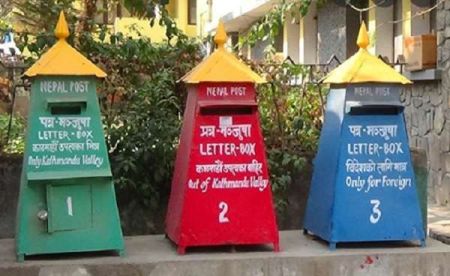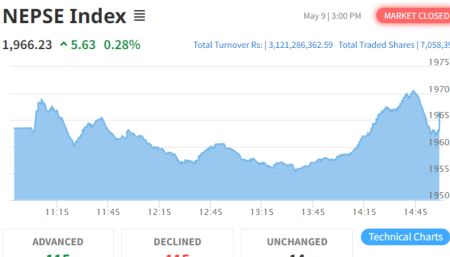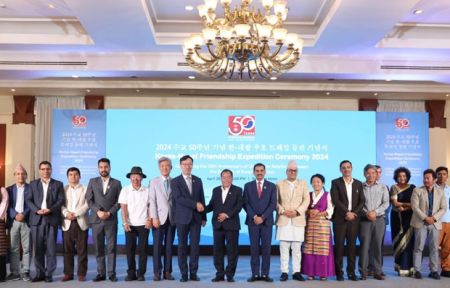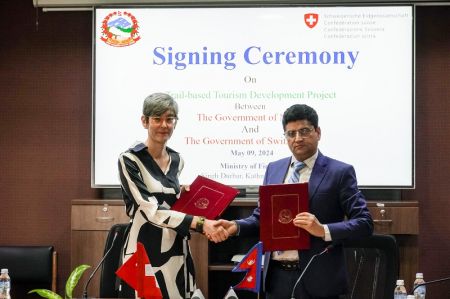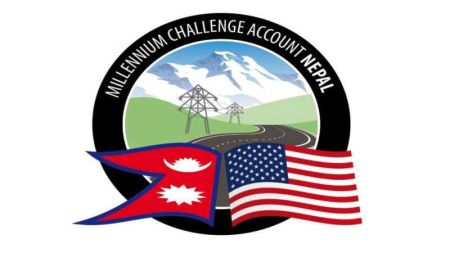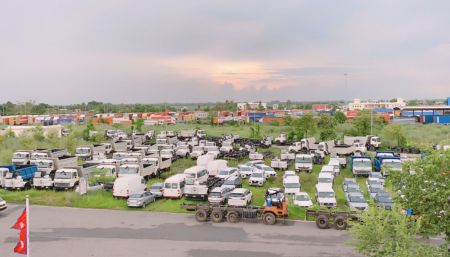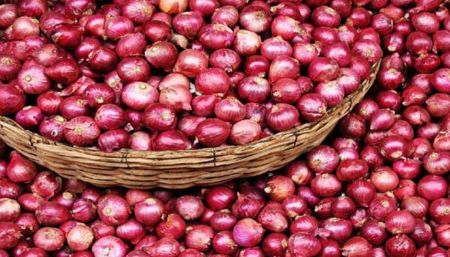BY Newbiz team
Madhesh Province appears homogeneous in certain aspects, yet it reveals a multitude of contrasts in various other facets. Both these aspects offer numerous opportunities, while posing some challenges. However, these challenges are not insurmountable, if the province develops some linkages with other provinces. What it needs is a big push. The provincial government can take such endeavours independently, although in certain instances, cooperation from both the federal government and local units might be needed.
The entire landmass of Madhesh comprises the Gangetic plains, characterised by alluvial soil and a warm climate. This makes the province the granary of the whole country. Moreover, this geographical feature also makes development of road infrastructure easy. On the other hand, Madhesh represents a land of stark contrasts. While the city of Birgunj in Parsa district and the corridor extending from there to Pathlaiya constitute a major industrial hub, the rest of the province only hosts a limited number of prominent industrial facilities. This pattern extends to forest resources as well. Parsa (54%) boasts the highest forest coverage due to the presence of the Parsa National Park, followed by Bara district with approximately 36% forest coverage. Siraha and Saptari have the lowest forest coverage, comprising around 16-17% of their respective land areas.
Poverty indicators serve as significant markers of these disparities. Roughly 24% of the population in the province falls below the poverty line, compared to the national average of 18%. Madhesh ranks better than only two provinces: Karnali (39%) and Sudurpashchim (25%). Madhesh also falls short in terms of gender equality. Similarly, the province trails behind the national average in per capita income, literacy rates, high school education attainment, and consequently, life expectancy as well.
Background
Madhesh Province boasts a rich historical legacy. The provincial capital, Janakpurdham, once was the centre of the Mithila civilization. The Kingdom of Simraungadh wielded significant power, although it eventually yielded to pressure from southern forces, causing its rulers to seek refuge in the Kathmandu Valley.
Fast-forwarding to the 18th century, a substantial influx of people migrated to this region from India. Historians posit various reasons for this migration, including natural disasters, famine in India, and invitations from Nepali rulers who aimed to cultivate more of the plains area. People from the hills were also encouraged to settle in the plains, but their migration was limited due to concerns over malaria. After the malaria eradication, however, even the people from the hills moved in there in thousands. While this migration contributed to deforestation and the conversion of land for agriculture, it also transformed the region into a hub of cross-cultural interactions. But the failure to manage these dynamics resulted in violent incidents such as the Gaur massacre of 2007, which prompted a considerable exodus of people of hill origin. Although some have gradually returned since the promulgation of the new Constitution in 2015, the rate of return remains limited.
Against this background, the province faces a twofold challenge: first, enhance a sense of security among both native inhabitants and migrants by righting the wrongs of the past. Second, attract investments from both the private and public sectors to utilise the available resources for the benefit of the local people and the country as a whole.
Agriculture
Madhesh Province is widely recognized as a major area in Nepal. Out of the nation's total arable land spanning 3,236,239 hectares, Madhesh accounts for 574,360 hectares (17.75%) despite having only 6.6% of the total land area of the country.
Madhesh Province Current Situation
i. GDP Size: Rs. 707 billion (Whole Nepal Rs. 5,381 billion)
ii. GDP Growth Rate: 1.9% (Country average 2.16%)
iii. Per Capita GDP of Madhesh:$875, lowest among all the provinces. (Country Average $ 399)
iv. Share of Madhesh in Country’s GDP: 13.1% (whereas that of Bagmati is 36.8%)
v. Industry: Units registered: 611 (Country total 8,947). 39 added last year (2023/24).
Investment in Industry: Rs. 170.8 billion (Country Total: Rs. 2,783.1 billion)
vi. Agriculture: 19% of total cultivated land of the country is in Madhesh.
vii. Forests: 4.83% of total forest area of the country (Madhesh Government Economic Survey 2023)
viii. Tourism: Very limited
ix. Education: No of Schools: 4,669 (Country total 36,032). Literacy 64% (lowest among seven provinces). Male literacy 72% Female Literacy 55%. One University: Rajarshi Janak University, a multi-disciplinary University, established in 2017 by a parliamentary resolution. A separate polytechnic institute is also proposed.
x. Health: Madhesh Institute of Health Sciences, a state-held autonomous body, established in 2021 with the objective of offering postgraduate education in health sciences and at present providing some bachelor level courses.
Another medical college is being set up in Bardibas by the central government.
Janaki Medical College and Teaching Hospital set up in 2003 by the private sector and affiliated to Tribhuvan University was mired in controversy and could not develop as much as expected.
xi. Banking: Banks Branches: Per bank branch 3,511 persons. Largest number of bank branches in Dhanusha District
xii. Insurance: Branches of Insurance Companies (14% Life insurance and 12% nonlife insurance): 3.58% of country’s total life insurance policies and 9% of non-life insurance policies issued in Madhesh
xiii. Infrastructure
a. Roads (6,060 KM, lowest among the provinces except Karnali and Sudur Paschim))
b. Railway: Jayanagar-Janakpur-Kurtha railway, planned to extend to Bardibas in near future and eventually also beyond.
c. Irrigation: 28% of total irrigated area of Nepal is in Madhesh
d. Electricity Generation: 25 MW (Solar, Sugar Mill Cogeneration etc.) 100% population has access to grid electricity.
Sources: Economic Surveys of Federal Government of Nepal and Madhesh Province Government, Nepal Rastra Bank Study Reports and Other Government Publications
The province boasts an extensive array of agricultural products. Staple food grains like paddy, wheat, and maize, along with cash crops such as sugarcane, pulses, potatoes, tobacco, and oilseeds, are cultivated here in substantial quantities. Moreover, robust horticultural production is evident, primarily centred around mangoes and various vegetables. Notably, Lalbandi in the Sarlahi district has gained distinction as the main supplier of tomatoes in the whole country. Similarly, the province engages in widespread livestock and poultry farming.
Fisheries have also been developed in lakes and ponds as well as paddy fields. According to the Nepal Rastra Bank’s Annual Study Report on Economic Activity for the fiscal year 2021/22, nearly all districts of Madhesh Province rank within the top 10 for fish farming. Fish farming can also be pursued in the naturally formed lakes and ponds scattered across all districts of Madhesh. Of late, there is a trend of building artificial lakes and ponds for flood control and rainwater storage for irrigation during dry spells. These ponds also hold potential for recreational activities and fisheries.
All districts of the province have easy access to the market, thanks to good road connections with the rest of the nation. These products can also be taken to the Indian markets as all the districts of the province share borders with India.
Forests
The province also boasts abundant forest resources, although the portion of land covered by forests comprises merely about 24% — the lowest among all provinces. Moreover, the distribution of forests across districts within the Province is far from uniform. Parsa enjoys substantial forest cover due to the presence of the Parsa National Park. This is followed by adjacent districts such as Bara and Rautahat. In contrast, the easternmost districts of Siraha and Saptari have the lowest forest coverage.
A special project for forest development is currently under implementation in the Sagarnath forest which spreads across Sarlahi and Mahottari as well as some parts of Rautahat.
The reforestation drive has become particularly urgent in districts with limited forest coverage. Depleted forest areas have led to declining groundwater levels, making it difficult for people to access both drinking water and irrigation resources.
One method to replenish forests is the community forest programme. In this endeavour, insights from successful community forestry projects within the province and other regions of the country can prove invaluable. Simultaneously, stimulating private sector investment should be prioritised, given the promising prospects for such ventures. Public land or areas partially covered by forests could be made available to the private sector for reforestation purposes or for developing tourist attractions under long-term leases or with full or partial rights to utilise forest products.
Historically, the province was renowned for its dense forests rich in high-quality timber. These forests underwent depletion partly to reclaim farmland and partly due to timber smuggling.
Industry
When it comes to industries, Madhesh Province outpaces many other provinces. However, this industrial growth is concentrated primarily in the districts of Bara and Parsa. Some sugar mills and cement industries also exist in Sarlahi, Rautahat, and Saptari districts. Rest of the districts lag significantly behind in terms of industrial development. Therefore, the challenge lies in extending industrial ventures beyond Bara and Parsa. In essence, a 'Go East' campaign needs to be initiated.
Industries established in any district of Madhesh Province face no difficulties in accessing markets. Thanks to the province's robust transportation network, these industries will enjoy seamless access to markets throughout the country. Additionally, due to its proximity to the Indian border, industries established in the province can effortlessly tap into the Indian market and also for export overseas. Required infrastructure, including the construction and upgrading of customs checkpoints and connecting roads, can be built easily. Likewise, existing customs checkpoints, like Birgunj, can be utilised and smaller checkpoints can be upgraded as per the demand.
The province can take several interventions for development of industries in its six 'non-industrialized' districts. One is to initiate a big industry that can spawn auxiliary enterprises. This mirrors strategies used to attract Intel to establish a facility in Vietnam or Suzuki to set up shop in India. Such a major industry can be based on local raw materials (with backward linkages) or targeted to local consumers. Janakpur Cigarette Factory was one such example which, unfortunately, is largely a forgotten history now.
Prime Ceramics has recently established a ceramic tile manufacturing unit in Rautahat. If successful, this venture could provide a foundation for drawing other investors to establish major industries. Nepal Ceramics also set up its manufacturing facility recently. But the facility is located in Bara - a district already attracting substantial investments in large industries. Prime Ceramic's presence in Rautahat could potentially pave the way for more industries to expand to central and eastern parts of the province.
Another intervention entails offering specialised support to small-scale industries, akin to India's development of Ludhiana. The provincial government can initiate actions in this direction, starting from the Rajbiraj-based Gajendra Narayan Singh Industrial Estate. Presently, only a few units operate there, with numerous plots remaining vacant. Moreover, considering that the Simara Special Economic Zone in Bara is struggling to attract investors, the provincial government can propose the federal government to hand over the facility to it to encourage small-scale industries.
The third intervention could be instituting a system of contract manufacturing and contract farming. Local units play a pivotal role in ensuring compliance with such contracts, particularly in contract farming. While manufacturers would procure products that meet their specifications, local governments could develop wholesale marketplaces to sell surplus products. The provincial government must establish the requisite legal framework for this.
Tourism
The province is home to several significant historical, cultural, and religious heritage sites with some extending to adjacent regions in other provinces and even across the border to India. Take examples of Mithila culture, Mithila art, and pilgrimage sites of Janakit temple and Dhanusha Dham. Notably, Janakpur holds importance not only for Hindus but also for Buddhists. The former King of Thailand wrote a book titled 'The Story of Mahajanaka' in the 1990s which is based in Janakpur and emphasises the Buddhist significance of this area. The Thai king had also expressed interest in developing Janakpurdham as a Buddhist pilgrimage site. It didn't materialise as the region was going through turmoil at that time.
Unfortunately, Janakpur and other regions within the province lack comprehensive tourism packages. Numerous diverse packages catering to pilgrimage and leisure travel can be conceived by including other pilgrimage sites and historical/ archaeological destinations around Janakpur. Janakpur is not just about Janaki Temple. Dhanusha Dham, where a relic of Lord Shiva's bow, believed to have been broken by Lord Ram to win Sita's hand in marriage, is preserved, is another attraction in Janakpur. Similarly, Matihani, in the adjacent Mahottari district, is home to the Gyankoopa centre of learning, which has existed for centuries. Likewise, Mahottari is also home to the renowned Jaleshwar Temple. Moreover, the historical Simraungadh fort in Bara, known for its impregnable defence designs, stands as a testament to the historical kingdom of Tirahut, which once ruled territories extending into present-day India, including Mujaffarpur and beyond. Additionally, Bara is home to the famous Gadhi Mai shrine which also draws devotees from far-flung areas of India. Saptari district is home to the famous Kankalini Temple as well as the Sahalesh Garden. This renowned garden, associated with the love story of King Sahalesh, features a unique orchid that blooms once a year on the New Year day of the Bikram Sambat calendar in mid-April. While scientists might contest this belief, there is no harm in letting this belief continue and exploit its tourism potential.
Other assets of tourism importance are the forests such as the Parsa National Park, various lakes, ponds, and rivers. Moreover, adjacent regions within other provinces and India can be seamlessly integrated into Madhesh's tourism package. For instance, the historic Sindhuli Gadhi, a hill station just a few hours' drive from the province capital Janakpur, can be included in the tour package. Similarly, the Koshi Tappu island on the Saptakoshi River, a paradise for birdwatchers, and the Chatara Dham (Baraha Kshetra) upstream, a significant pilgrimage site for both Nepalis and Indians, can also be featured.
Equally important is Sitamarhi, India, located merely 40 km away across the border, given its significance as a Ramayana pilgrimage site. If Nepal doesn't expedite the development of a Ramayana-based tourism package, linking Sitamarhi with Janakpur, India might seize the opportunity, like it has already done successfully with Lumbini.
Population
Madhesh Province, as per the 2021 census, has a total population of 6,114,600 as compared to national total of 29,64,578. Of this, 50.1% are males, while 49.9% are females. The gender ratio of 100.55 is above the national average of 95.59. The population density is 633 individuals per square kilometre, which is very high. Furthermore, the annual population growth rate is recorded at 1.19%, which is higher than the national average of 0.92%.
Population Pyramid pic
The segment of the population aged between 15 and 35 years accounts for 37%, while the population within the 0-35 age bracket comprises 67%. This demographic composition presents the potential for a demographic dividend. However, this advantageous situation is gradually diminishing due to a decline in the population growth rate, even though it still surpasses the national average. Given the already high population density, there exists limited capacity to accommodate further population growth. This makes it urgent to utilise the existing population dividend opportunity as soon as possible.
One big population problem in Madhesh is labour migration. In 2021/22, six out of 10 districts with the highest number of individuals obtaining labour permits for foreign employment were from Madhesh. Five districts of Madhesh were in the top 10 list in 2019/20 and 2020/21. Increased migration has led to a shortage of labourers within the agriculture and industrial sectors. Government policies need to address this issue.
Infrastructure
Due to its flat topography, the province faces minimal infrastructural challenges. The East-West Highway traverses the region, reaching all districts except Parsa, which maintains its independent road connection with the rest of the country. Running parallel to the East-West Highway is the Hulaki Highway that runs between the East-West Highway and the Indian border. While some segments of this road are completed and already blacktopped, construction is pending in other areas due to various issues, including site clearance. The Hulaki Highway plays a vital role in linking the regions near the Indian border - areas still grappling with significant poverty - to the market.
Additionally, numerous shorter roads connect district headquarters and major towns to both the East-West Highway and the Hulaki Highway. The challenge lies in maintaining and upgrading these roads in a timely manner. Kathmandu Terai Fast Track, designed to link Kathmandu with Nijgadh of Bara, is a mega project in the province.
The construction of additional necessary roads becomes feasible once land acquisition challenges are addressed. Private sector investment can be harnessed for this purpose through models like BOOT or by mobilising funds via public bonds.
Another special feature of this province is the presence of the only operational passenger train service in the country. The Janakpur-Jayanagar Railway connects Jayanagar of India with Bijalpura in Nepal, passing through Janakpur. Plans are underway to extend this line to Bardibas where it is designed to meet the proposed East-West Electric Railway line. This railway presents a valuable opportunity to serve as a gateway for Indian tourists and facilitate import-export activities. Furthermore, there's potential to extend the existing railway up to Sirsiya Dry Port near Birgunj, continuing to Pathlaiya and beyond. This expansion could be facilitated by the existence of a railway track along this route up to Amlekhganj, which requires renovation.
One notable infrastructural challenge in the province is that of irrigation. Many old irrigation systems are in a state of disrepair and are largely non-functional. However, the Sunkoshi-Marin Diversion Project is making significant progress. Once completed, this project will enhance water availability in the Bagmati River and provide irrigation for a substantial portion of arable land in the province.
In terms of power infrastructure, Madhesh Province boasts a robust distribution network, with 100% of the population enjoying access to electricity from the national grid. While the province lacks hydropower potential, it has two alternative sources. One is solar power. Some companies are already harnessing this potential. The Eco Power Development Company began supplying 10 MW of solar power to the grid from its 12.25 MW plant in Dhalkebar, Mahottari, in 2021. Similarly, Api Power supplies 6 MW of solar power to the grid from three plants in Rautahat, Dhanusha, and Bara districts. Sagarmatha Power contributes 3 MW of solar power to the grid from its facilities in Rautahat and Dhanusha, according to the Nepal Electricity Authority. Api Power has already signed a power purchase agreement for an additional 8 MW solar project in Parsa.
Another potential source of power generation is co-generation within sugar mills. Electricity is produced using sugar mill waste, or "bagasse," in the mills' boilers. Some of this electricity is utilised by the mill itself, and the surplus can be supplied to the national grid. According to the NEA, Indu Shanker Sugar Mill in Sarlahi and Everest Sugar Mill in Mahottari each contribute 3 MW (totaling 6 MW) of such electricity to the national grid.
Challenges galore
Despite its promising opportunities, Madhesh Province faces certain challenges that hinder the realisation of its potential. Urban pollution control stands out as a significant challenge, while there is also a need for improvements in educational standards. While pollution issues extend to villages as well, effective urban pollution control is crucial for fostering tourism and attracting private sector investments.
Although major centres such as Janakpur and Birgunj have the potential to become educational hubs, challenges persist as existing institutions are yet to earn a good reputation. Attracting private sector investment from other parts of the country or abroad poses another obstacle. This is because, excluding the Bara-Parsa corridor, there are not many big industries in other parts of the province. The challenge is to bring a couple of big industries there first. They can be used to attract more such industries. This, however, necessitates a robust marketing strategy.
One area to attract private sector investment could be farm mechanisation, establishing wholesale agricultural markets, and augmenting farm production. Such endeavours can drive interest in farm mechanisation ventures and agro-based industries using local resources. Building linkages between agriculture and industry, potentially through contract farming, requires appropriate legal frameworks, which, if established, could help curb migration of youth.
Another challenge is proper preservation and marketing of natural and cultural heritage sites for tourism development.
As the largest contributor of migrant workers, the province also grapples with the challenge of channelling remittances into productive investments. The history of Madhesh patriotism and the region's involvement in past uprisings could serve to motivate migrant workers toward investing in the prosperity of their homeland. Political leadership should align efforts in this direction.
Furthermore, a negative perception looms over Madhesh Province due to a prevailing belief in high corruption levels. Recent instances like the fictitious schools scandal continue to influence public opinion both within and outside the province. To reshape this perception, political leadership must employ diverse measures, encompassing anti-corruption initiatives, legal reforms, empowering citizens, and raising awareness about transparency rights.
Sunkoshi-Marin Diversion Project
This project involves diverting water from the Sunkoshi River through a tunnel that commences approximately 2 km upstream from Khurkot Bazar in Sindhuli district. The water will be directed into Marin Khola, a tributary of the Bagmati River located at Kusumtar in Kamalamai Municipality. The primary objective is to augment the water supply in the Bagmati River, a development anticipated to provide adequate irrigation resources for approximately 122,000 hectares of land across Bara, Sarlahi, Rautahat, Dhanusha, and Mahottari districts.
As of the latest reports, roughly 60% of the tunnel's length, spanning 13.3 km, has already been excavated. The remaining tunnel construction is projected to conclude by 2025. The comprehensive project is anticipated to be fully operational by 2029, in alignment with the outlined plan.
Problems of Choice
Madhesh province has lots of potential, opportunities and resources as well as problems in utilising these resources to develop the province to fulfil the aspirations of the people of the Province and to contribute in overall national prosperity. The problem is basically which aspiration to fulfil the first and which resources to use for that and how. It needs capital investment and technical talent to use the resources. Thus the problems are intermingled and the province is mired in a situation of ‘poverty amidst plenty’.
Some solutions can be offered as hereunder:
1. The most important need is generation of employment. For immediate employment generation the political leadership is tempted to go for popular measures, such as Prime Minister or Chief Minister Rojgar Yojana. Employment generated that way is not sustainable and can run only as long as there is surplus financial resources with the government to spend like that. Development projects like roads, irrigation canals and investment by the private sector to set up industries and sourcing raw material from the local farmers will create sustainable employment. The Province government should go for such methods.
2. Such development projects need skilled technical human resources to be successful. Therefore, the next important area to focus is development of such resources by setting up medical colleges, polytechnic institutes, and training centres of high (if possible international) standard. The standard is to be improved in case of the existing such institutes. Private sector can be encouraged in this by various methods. Due to the big population of the Province, it will not be difficult to get the students or other customers.
3. Some reforms have to be made at the Province and Local government level in the tax system and other areas to attract investment in industry and trade. There should be effective marketing of such reforms.
4. Private sector can be attracted to invest in infrastructure development and waste management. Public-Private Partnership, Viability Gap Funding and Infrastructure Bonds can be the measures to take for this.
5. Some potentials of the Province will be better utilised if there is coordination with the neighbouring provinces and among the local governments within the province itself. For example, in tourism packages, minerals sourcing for industries, watershed management for environment protection, market for the Madhesh province products etc.
6. Some measures are urgently required to improve the linkages between agriculture and industry and businesses. This can be done through, among others, developing wholesale marketplaces for agricultural produce, contract farming etc. A proper regulatory mechanism has to be in place for its high effectiveness.
7. Widespread efforts are required to mechanise agriculture without which the youth, particularly the educated one, will not be attracted to agriculture. This will also increase agricultural production, reduce waste and attract businesses that the farm mechanisation will create.
8. Madhesh province society is still feudalistic and this problem is more prominent here also because of historical reasons. That may be the reason why the corruption perception is very high and a narrative has been set that the Madhesh people have difficulty in getting the government services within the province as well as from the federal government. The provincial government has to take a lead on this by making some legal and policy reforms and conducting some campaigns. If the farmers or businesspersons need to go to the central government to get some facilities they deserve, the local government and the provincial government should take the role of mediation and coordination so that the people need not go all the way to the centre.
9. Finally, but equally important is the need to control crimes and give a sense of security to the general people as well to the businesses.


